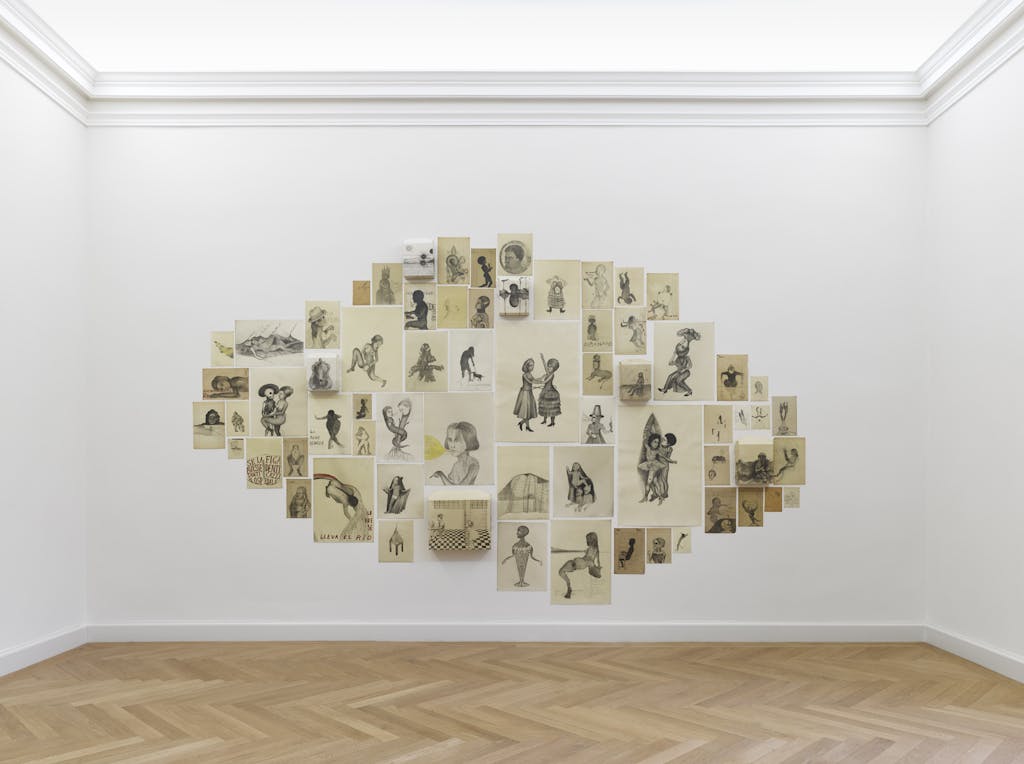As a child, Sandra Vásquez came into contact both with the culture of her homeland and the European culture of Spain and Italy. The oeuvre of the artist, who experienced Pinochet's dictatorship as a child and young woman, is marked strongly by personal experience and recollections. At the same time, sources from the history of film, art and literature also flow into her works. Thus, for instance, she is enthusiastic about Latin America folk art and literature.
In particular the novel El viaje de los siete demonios by the Argentinian writer Manuel Mujica Láinez - in which the author engages with the seven deadly sins and their representation in the form of demons - has fascinated the artist and decisively influenced her recent work. Thus, the demon, Leviathan, who stands here for envy, crops up several times in her drawings as an "atypical devil", as the artist herself says. Vásquez’ entire oeuvre is indeed inhabited by a certain pathos, a very emotional and theatrical form of artistic articulation.
Dreams, too, and their processing occupy a special place in the artist's work. She constantly looks at what is nearby but nevertheless forgotten, allowing dreams and reality to merge with each other. Her drawings are permeated by corporeality, focusing on intimate experience and tending toward the phantasmagoric and often disturbing. Dreams and trauma lie close to one another, entering into a closely meshed alliance.
Apart from the sheets of drawings, for the first time, new, three-dimensional paper works by the artist are on show. Vásquez de la Horra calls these “little houses” made of drawings dipped into the wax that is typical for her, "dream spaces" and "stages" on which everyday scenes or landscapes are restaged. The artist illuminates the complex interrelations among humankind, nature and universe, and also the various stages of life and the life-cycle.
